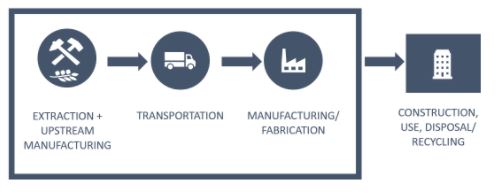Governments, institutions, private organizations and construction companies are looking for ways to reduce the carbon pollution embedded in the products they purchase. Many are choosing to leverage their buying power to reduce impacts to climate through low carbon procurement policies or low carbon product labels. “Buy Clean” initiatives typically aim to collect data and set requirements for procuring products that use less energy or emit less carbon during their lifecycle.
When looking for a product that was manufactured with less energy or emitted less greenhouse gas emissions than others, ENERGY STAR can help. For many products, the largest carbon emissions and energy use in the supply chain by far, comes from the manufacturing process.
EPA has developed 1-100 ENERGY STAR energy performance scores to benchmark the energy efficiency of certain manufacturing plants for nearly 20 sectors. Plants that score 75 or higher can earn the ENERGY STAR certification, signifying they are among the best in terms of energy efficiency. To assess the embodied energy performance of a product ask vendors to share:
- Whether the product components come from an ENERGY STAR certified manufacturing plant.
- If there is not a certified plant in your area, ask for the ENERGY STAR score of the manufacturing plants supplying the components and choose the plant with the highest score.
- Requiring ENERGY STAR Plant Certification or disclosure of an ENERGY STAR score can be included in Buy Clean initiatives, procurement criteria, or environmental labels as a credible metric to help assess the embodied energy of a product.

Key stages in a product’s lifecycle that consume energy and produce greenhouse gases Credit: Meghan Lewis, Carbon Leadership Forum
